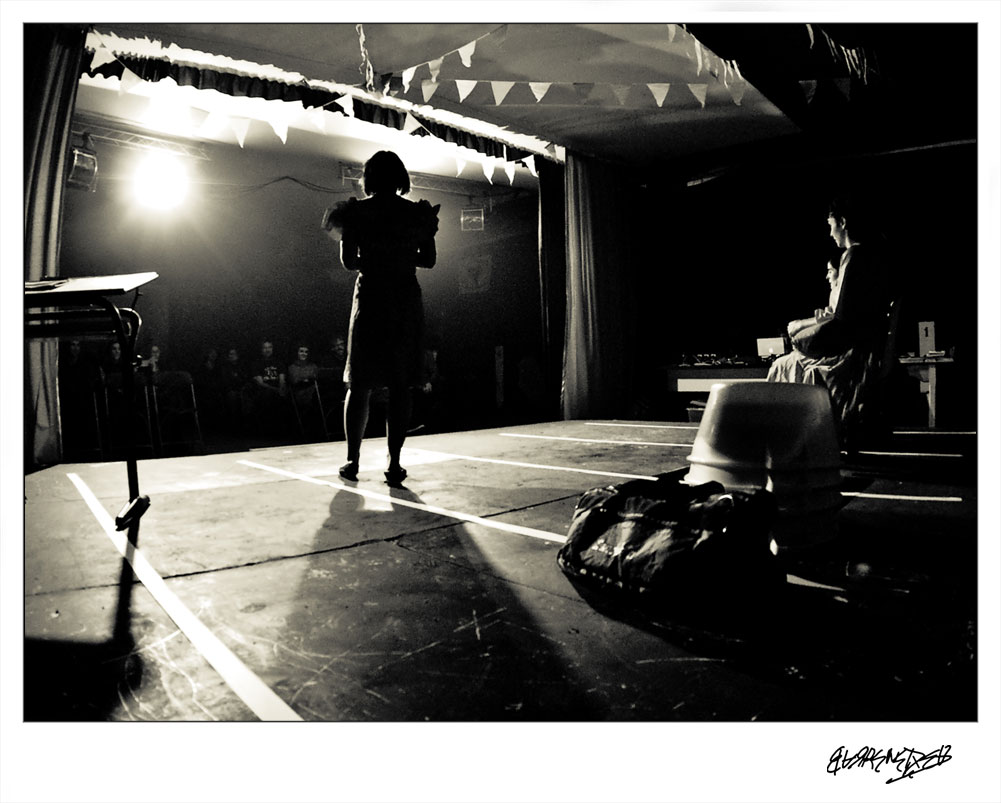
On Mondays, after our graduate Shakespeare seminar, we would get lunch at The Malt Shop on Main Street. Four tiny tables huddled in the rear of the store; a counter stretched across the front. Behind the counter was the chalkboard full of the day’s salads, soups, sandwiches, and also behind the counter, three or four of the most attractive young women at the University of Delaware. It was a very popular lunch spot.
Our Shakespeare seminar ended about fifteen minutes before the graduate acting seminars did, so when the actors came in, we had already snagged at least two of the four tables for their show. That’s what we used to whisper to each other as they entered to the jingling of the bell on the door, “Here comes the floor show.” It wasn’t just their clothes – the long, brightly colored scarves, the patchwork pants and Birkenstocks, the hats. It was everything. How they ordered a sandwich – “I would ADORE a tuna MELT” – that final “T” clear and ringing, bouncing off the chalkboards. How they stood in line – taking up space, gesturing to the ceiling and floor. How they each picked up their order and swept out the door, calling back to those waiting, the exit line hanging in the air. We writers and literary types found them amusing and a little absurd. I discovered later that the actors found us, when they found us, arrogant, and frankly, a little dull.
Ironically, of course, we had all spent our mornings falling in love with exactly the same plays, exactly the same characters. With Shakespeare. And we’d all been trying to discover the same things: character motivation, dramatic arcs, the symbols in the world of the play. As a young writer and a new teacher, all these things fascinated me, but especially Shakespeare’s genius at creating characters I felt I knew, even hundreds of years away, characters I believed. Falstaff deciding that “discretion is the better part of valor” and pretending to die. Ophelia, bereft and mad, passing out imaginary flowers and singing bawdy songs. But even though the acting students and I shared this fascination, we lived in different worlds. When the actors came in to The Malt Shop for lunch, they may as well have been speaking another language.
Fast forward a dozen years.
My husband, James Keegan, who’d attended that Shakespeare seminar with me and gotten a literary Ph. D, realized that the dream he’d put off when he was eighteen, the dream of going to Cal Arts and becoming an actor, could not be deferred any longer. Even in graduate school, he’d come as close as he could to uniting the two worlds, the world of the writer and the actor. He’d done his Ph. D. specialty exam in “Shakespeare in Performance,” a study of different stagings of Shakespeare’s plays. In 2003, he bridged the gap between the two worlds. He auditioned for the American Shakespeare Center (the ASC) in Staunton, Virginia and became a professional Shakespearean actor, all the while retaining his roles as a college teacher and a writer. He taught his literature and writing classes at the Georgetown Campus of the University of Delaware on Monday and Tuesday, and then drove five hours to be on the stage Wednesday through Sunday. He worked with some of the same people we used to gawk at in The Malt Shop. He spent his days rehearsing and performing, not reading and talking about the plays, but embodying the characters. That’s the crucial word, and the one I want to talk about here – embodying.
Because he became an actor, I had the tremendous opportunity of seeing the plays he was cast in, not just once, but sometimes over a dozen times during the ASC’s long summer/fall season. Hamlet, Midsummer Night’s Dream, King Lear, Henry IV and many, many more. I may be one of the few people in the world who has seen plays so often as a true audience member and not someone connected professionally to the production. I also had the opportunity to go to rehearsals and to live with the actors and listen to and watch them prepare to do their work. All of this has profoundly changed how I feel about myself as a writer and about the creation of character. Don’t get me wrong, the actors were often every bit as absurd and amusing as they had been when they came into The Malt Shop. But now I understood in a much more profound way how closely our worlds were related. Suddenly, I found critical lessons for my own writing in the actors’ craft and in their preparation.
One of the amazing things about watching an actor become a character is that they have to do it first in the flesh; they can’t think themselves into the character, they have to find the character in their bodies. Although actors might begin the process intellectually, memorizing text, talking about themes, when it comes to the stage and the performance, the actor must be in the body. In the house my husband shared with other actors, right across the street from the theater, everyone would come into the kitchen to make lunch or dinner before rehearsals or the evening show. They warmed up their voices as they microwaved leftovers or made sandwiches, and the kitchen and house filled with sound. They sang snatches of songs softly and then loudly, hummed strange high notes, yawned to warm up their facial muscles. In the hallway sometimes, you’d find an actor with a leg thrown over the bannister, talking to himself, or someone holding the bannister and leaning forward like the figure on the prow of a ship.
In just a little while, someone else would inhabit their bodies, and they to prepare their bodies to let them in. King Lear’s voice would be my husband’s voice. James, only forty-seven when he played Lear, an eighty-year-old king, would, as he and his director agreed, “not put on age, but remove youth.” He found the movements and the posture that made him young and set them aside. His shoulders and hips stiffened. He shortened his stride. When James played Macbeth, he had been certified in stage combat, and he planned the way Macbeth would hold himself in a fight –erect and forward, the way he would command space on the stage — central and large. All the actors did similar work for their roles.
So, if you are a playwright, you can count on trained actors to do this for you in every performance. The beautiful thing about writing for the stage is that your work will be literally embodied. I remember my friend and teacher, Jeanne Murray Walker, telling me that one of the most surprising things to her when she transitioned from being a poet to being a playwright was that the words that she wrote on the page became real in the world. When she said that a character wore pink Mickey Mouse sunglasses, someone went out and found pink Mickey Mouse sunglasses.
Ironically, then, it’s playwrights who have the least to do to bring their fictional worlds and their characters to life.
However, as a fiction writer, and even as a poet, I began to realize the extent to which I need and want to do the actor’s work on the page, to imagine myself into the body of the character that I am creating – or better said, the character that I am discovering as I write — and to ask myself a new set of questions. How does it feel to be in the body of this character at this moment? What is he doing with his hands? What aches or pains does she have? Do these pains change the way she walks? How long has she lived with them? Are his feet cold? What happens in her body when she gets angry?
What are you doing with your body right now? What are you aware of in your body?
These are questions that I think it’s easy to forget when we are writing. Sometimes even the best writers get so deeply consumed by the thoughts and emotions of a character that they all but forget the character’s physical existence. Not long ago, for example, James and I listened to Amor Towles’ novel Rules of Civility. It’s an excellent novel, and I appreciated his intelligent structure, his vivid description, and his strong sense of the voice of particular characters. However, one of the things that was missing for me was this sense of the embodiment of the character. In this paragraph from the novel, you can see Towle’s great clarity in his description of the Hotspot Nightclub in Greenwich Village, but you can also feel the absence of the body of the narrator, Katey Kontent:
“From a look around the club, you couldn’t tell that it was New Year’s Eve. There were no hats or streamers; no paper trumpets. At the back of the club, looming over a small empty dance floor, a jazz quartet was playing loved-me-and-left-me standards without a vocalist. The saxophonist, a mournful giant with skin as black as motor oil, had apparently lost his way in the labyrinth of one of his long, lonely solos. While the bass player, a coffee-and-cream mulatto with a small deferential mustache, was being careful not to hurry him. Boom, boom, boom, he went, at half the pace of a heartbeat.”
To be fair, a couple of paragraphs later, Katey does mention that she wears comfortable, flat shoes, but that’s it, and that’s it for pages and pages. It isn’t that the writing is bad – it’s detailed, careful, vivid – it’s that I am missing the sense of the body that an actor will give Katey when the book gets made into a movie.
Why is that important? As a writer, when I think deeply about the physical body of a fictional character, I have a chance to enter the world that character inhabits in a specific and unique human body, that is, in an imagined human form. And, as a reader, if I feel within a character’s body, I move through that specific and unique world with a depth of compassion that isn’t possible in any other way. It is our bodies that separate us, but it is also bodies and inhabiting a body that connects us.
I yawn when I see someone yawn. I have been cold, so when I write about a character trudging through snow who struggles to breathe the freezing air and can no longer feel her numb feet, I am connected to her humanity in a deeper way, and my connection becomes the reader’s connection.
A passage from Amy Tan’s book The Bonesetter’s Daughter comes to mind. This moment is from Part I, and here the main character, Ruth, a preteen, wrongly believes that she is pregnant:
“Now whenever Ruth saw Lance, she breathed so hard and fast her lungs seized up and she nearly fainted from lack of air. She had a constant stomachache. Sometimes her stomach went into spasm and she stood over the toilet heaving, but nothing came out. When she ate, she imagined the food falling into the baby frog’s mouth, and then her stomach felt like a gunky swamp and she had to run to the bathroom and make herself retch, hoping the frog would leap down the toilet and her troubles could be flushed away. . . . First she cried a lot in the bathroom, then sliced her wrist with a dinner knife. It left a row of plowed-up skin, no blood, and it hurt too much to cut any deeper.”
The beauty of this passage comes from how deeply we as readers are allowed into Ruth’s physical reality, and I think that the connection to her body, particularly to her body in this tense, human moment, allows us to feel her panic and have a kind of compassion for her that isn’t possible without imagining ourselves all the way into her situation. I’m also arguing that Amy Tan, as the writer, had to inhabit Ruth’s body first, to imagine what it might physically feel like to be an uninformed, terrified young girl staring down at the toilet and trying to throw up. We make the connection as readers because Tan made the connection as a writer. Through the character, we all overcome the loneliness of the individual body and imagine ourselves, writer and reader, into a shared humanity. Actors teach us that characters begin in bodies and move out into the world.

